Have you ever bitten into a piece of chicken so perfectly crisp on the outside yet miraculously juicy within that it made you close your eyes involuntarily? That’s the magic of a properly executed Parmesan crusted chicken. After twenty-three years in professional kitchens, I still remember the first time I tasted this dish at my grandmother’s kitchen table in northern Italy—simplicity and perfection on a plate.
Parmesan crusted chicken isnt just another weeknight dinner option. It’s a culinary chameleon that straddles the line between casual comfort food and sophisticated entertaining fare. What makes this dish truly special is the alchemy that happens when aged Parmesan meets high heat, creating a savory, nutty armor around tender chicken breast that protects, flavors, and elevates the meat in one masterful stroke.
1. Ingredients & Substitutions
The Foundation
- 4 boneless, skinless chicken breasts (approximately 6-8 oz each)
- 1 cup freshly grated Parmigiano-Reggiano cheese
- 1 cup panko breadcrumbs
- 2 large eggs
- ¼ cup all-purpose flour
- 2 tablespoons fresh thyme leaves, chopped
- 2 cloves garlic, finely minced
- 1 tablespoon Dijon mustard
- 1 teaspoon lemon zest
- ½ teaspoon freshly ground black pepper
- ¼ teaspoon cayenne pepper (optional)
- ½ cup olive oil for frying
- Kosher salt, to taste
The chicken selection here matters tremendously. While many recipes call for pounding the breasts to an even thickness, I prefer butterflying them horizontally. This method creates more surface area for that precious Parmesan crust while maintaining juiciness. Each bite offers the perfect ratio of coating to meat.
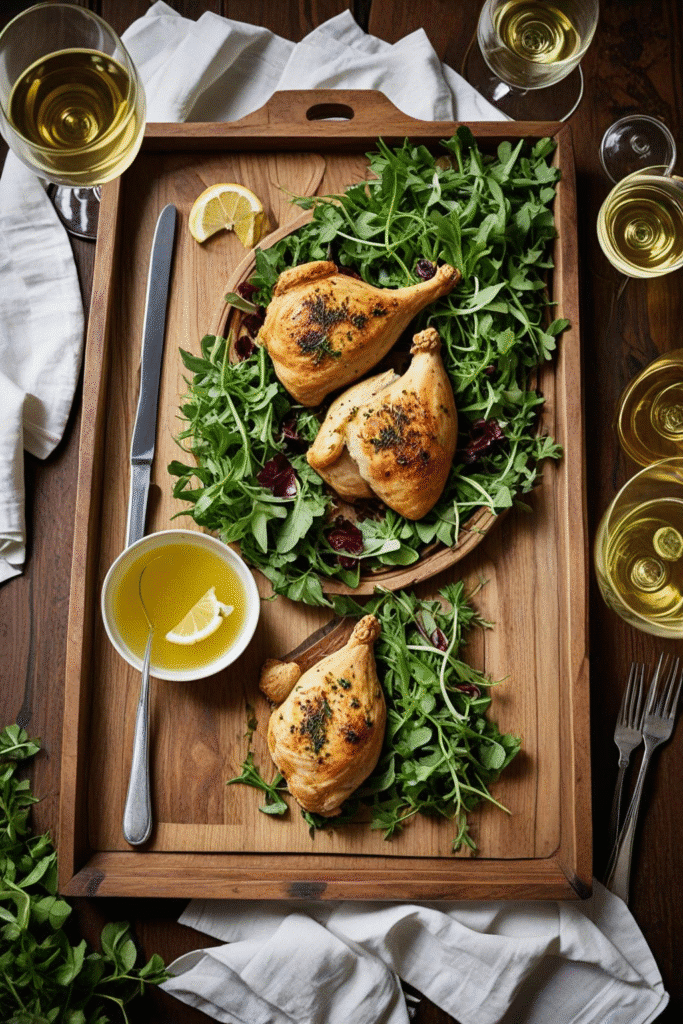
For those navigating dietary restrictions, there are several thoughtful adaptations possible. Gluten-free panko provides nearly identical texture, though I recommend toasting it lightly before use to enhance the crispness that gluten-free products sometimes lack. Plant-based eaters can apply this same technique to firm tofu slices or even cauliflower steaks, adjusting cooking times accordingly.
The cheese itself deserves special attention. True Parmigiano-Reggiano, with its complex crystalline structure and pronounced umami notes, creates a fundamentally different crust than domestic Parmesan alternatives. If budget constraints apply, Grana Padano offers a comparable flavor profile at roughly two-thirds the price point. The pre-grated stuff in plastic containers? It contains anti-caking agents that inhibit proper melting—avoid it at all costs.
2. Step-by-Step Instructions
Preparation
Begin by setting up your breading station—a technique the French call “mise en place” that will transform your cooking experience. Arrange three shallow dishes: flour in the first, beaten eggs whisked with Dijon mustard in the second, and the third containing your panko breadcrumbs combined with grated Parmesan, herbs, garlic, lemon zest, and seasonings.
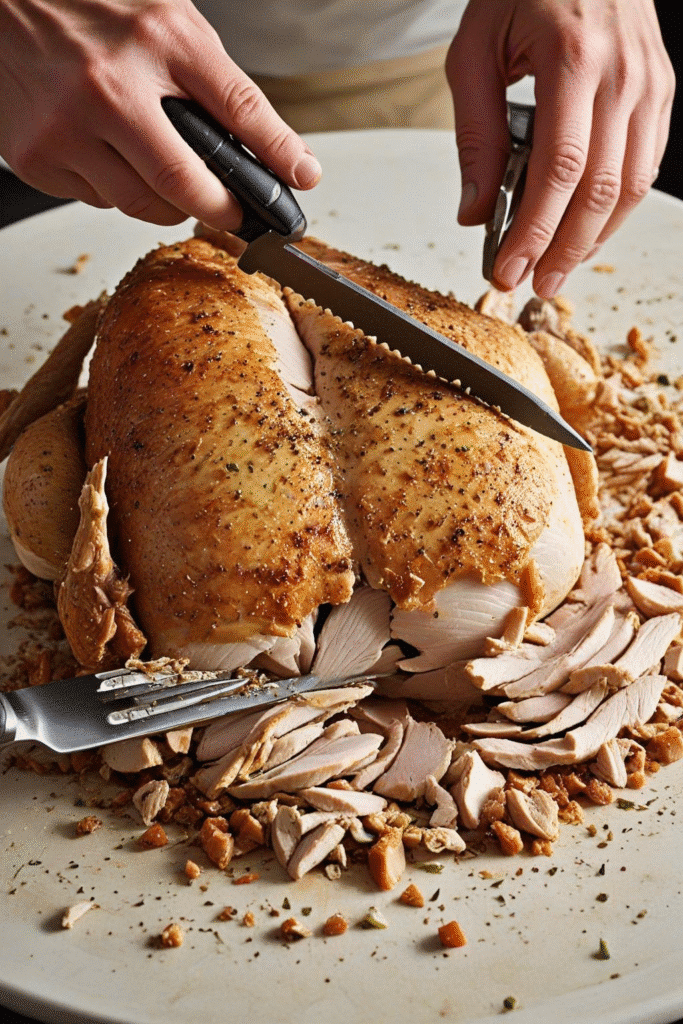
If using whole chicken breasts, butterfly them horizontally and gently pound to even thickness, about ½-inch. Season both sides generously with kosher salt and pepper, then allow them to rest at room temperature for 15 minutes. This crucial step tempurs the meat and ensures even cooking throughout.
Working with one piece at a time, dredge the chicken in flour, shaking off excess—a common mistake is leaving too much flour, which can create a gummy layer beneath the crust. Next, dip in the egg mixture, allowing excess to drip off, then press firmly into the Parmesan-panko mixture, ensuring an even coating on all surfaces. For an extra-crispy result, repeat the egg and Parmesan-panko steps.
Cooking
Heat olive oil in a large, heavy-bottomed skillet over medium heat until shimmering but not smoking. The ideal temperature hovers around 350°F—hot enough to create immediate sizzle but not so hot that the cheese burns before the chicken cooks through. If your uncertain, drop a small pinch of breadcrumbs in the oil; they should bubble gently around the edges.
Place the breaded chicken carefully into the hot oil, working in batches if necessary to avoid crowding the pan. Crowding causes steaming rather than proper frying, robbing you of that crackling crust that defines this dish. Cook for approximately 4-5 minutes per side until deeply golden brown and the internal temperature reaches 165°F.
A crucial yet often overlooked step: after removing the chicken from the pan, let it rest on a wire rack rather than paper towels. This prevents the bottom crust from steaming and becoming soggy, preserving the textural contrast that makes this dish extraordinary. Three minutes of patience here makes all the difference.
3. Cooking Techniques & Science
The beauty of Parmesan crusted chicken lies in a fascinating bit of food chemistry. Parmesan cheese contains high levels of protein and calcium phosphate, which form a structured network when heated. Unlike mozzarella or cheddar, which melt into gooey pools, Parmesan’s molecular composition allows it to create a firm, cohesive crust when exposed to heat—precisely what we’re exploiting in this recipe.
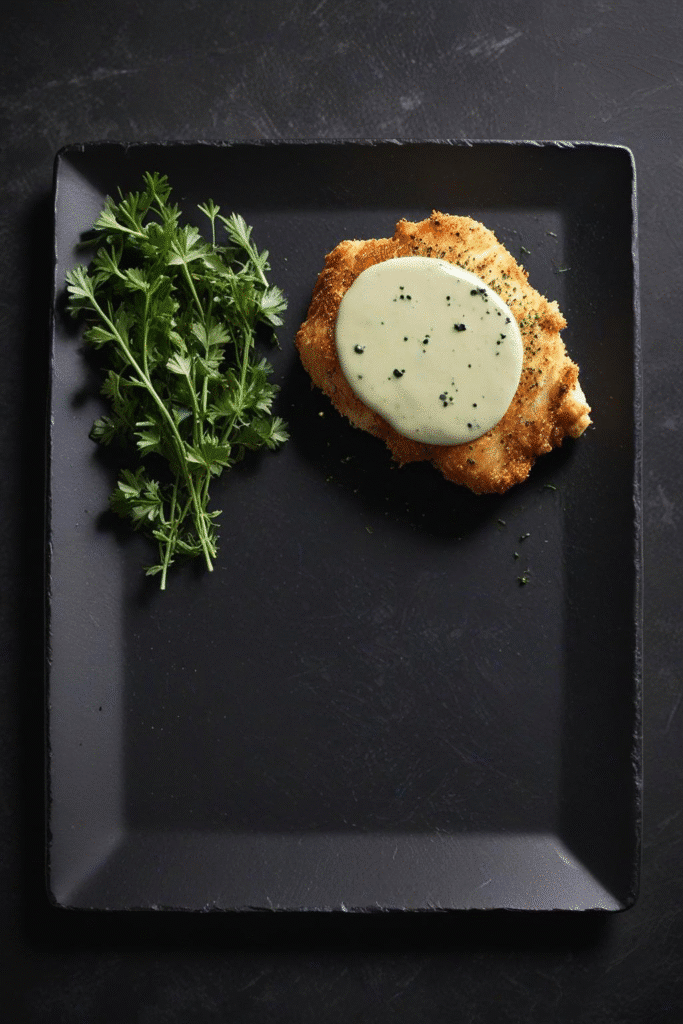
The Maillard reaction—that complex dance between amino acids and reducing sugars under heat—reaches its full potential in this dish. As the proteins in both cheese and chicken brown, hundreds of new flavor compounds develop, creating that distinctive savory depth. The panko breadcrumbs, with their jagged structure and low moisture content, provide crucial surface area for this reaction while absorbing less oil than traditional breadcrumbs.
One technique I’ve refined over decades of professional cooking is double-dredging. After the initial breading process, allow the chicken to rest for five minutes, then repeat the egg wash and Parmesan-panko steps. This creates microscopic layers that expand differently during cooking, resulting in a shatteringly crisp exterior with delicate, airy pockets throughout the crust.
Temperature management represents the most critical technical aspect of this dish. Too hot, and the cheese burns before the chicken cooks through; too cool, and the coating absorbs excess oil, becoming greasy. A heavy-bottomed cast iron skillet offers superior heat retention and distribution, maintaining that sweet spot around 350°F throughout the cooking process.
4. Common Pitfalls & Troubleshooting
Even seasoned chefs encounter challenges with Parmesan crusted chicken. The most frequent issue? Breading that slides off during cooking. Two factors typically cause this: insufficient drying of the chicken surface before beginning the breading process, or flipping the chicken too early, before the crust has set. Pat the chicken thoroughly dry with paper towels before starting, and resist the urge to peek or flip prematurely.
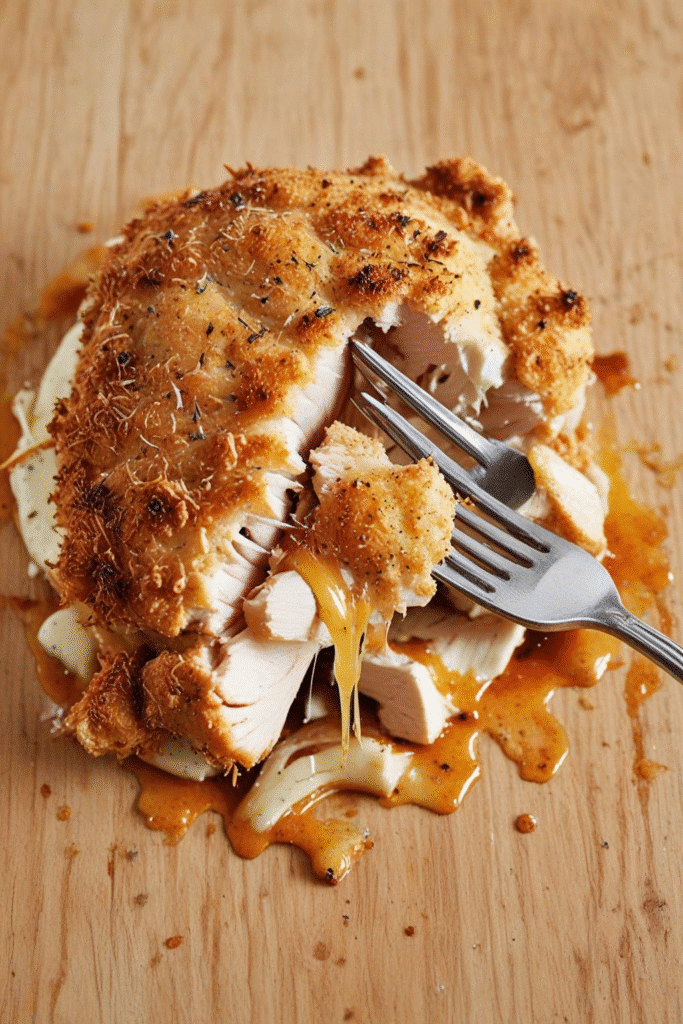
Another common problem is uneven browning. This usually stems from inconsistent chicken thickness or hot spots in your pan. The solution is twofold: ensure uniform thickness through proper butterflying or pounding, and rotate the chicken 90 degrees halfway through cooking each side to promote even coloration.
If you’re finding the exterior browns too quickly while the interior remains undercooked, lower the heat and finish the chicken in a 350°F oven until it reaches the proper internal temperature. Conversely, if the chicken reaches temperature but lacks golden color, a quick blast under the broiler can add that final touch of caramelization.
For those who’ve experienced a soggy bottom crust, remember that steam is the enemy of crispness. Elevating the chicken on a wire rack after cooking allows air circulation around the entire piece, preserving that textural perfection from edge to edge.
5. Serving & Pairing Suggestions
Parmesan crusted chicken possesses a remarkable versatility that few dishes can match. For a traditional Italian presentation, serve it alongside a simple arugula salad dressed with lemon vinaigrette, allowing the peppery greens and bright acidity to cut through the richness of the crust. A few shavings of additional Parmigiano-Reggiano create a thoughtful echo of the main flavor profile.
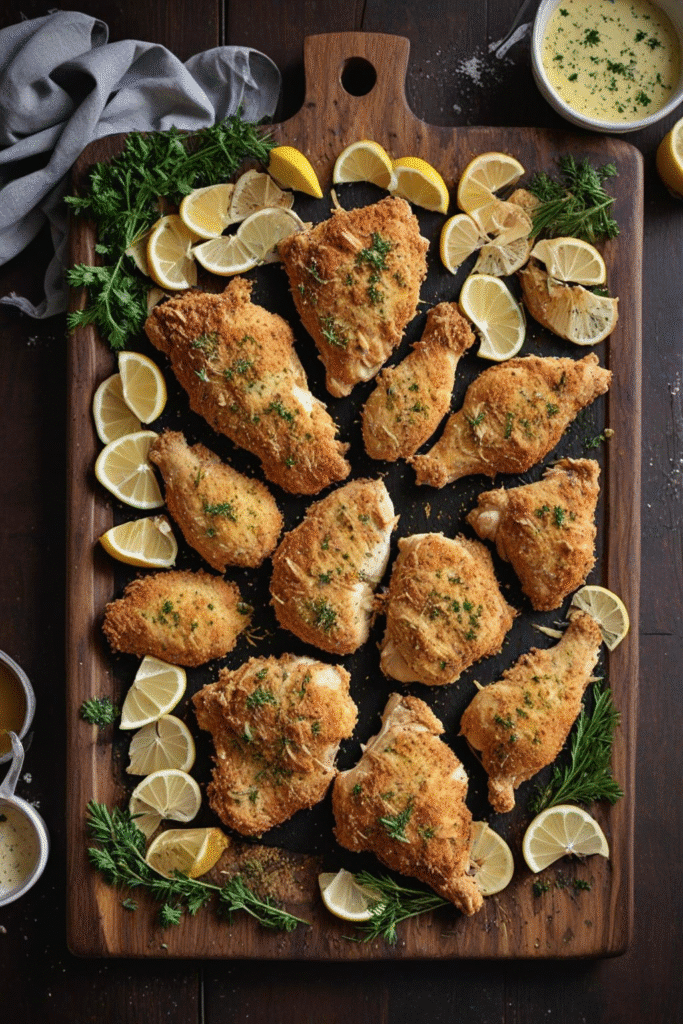
For a more substantial meal, consider serving it atop linguine tossed with a light, bright tomato sauce—nothing too heavy or complex that might overwhelm the chicken’s nuanced flavors. The acidic tomatoes provide perfect counterpoint to the savory, umami-rich crust.
Wine pairing presents an interesting challenge, as the dish bridges several flavor territories. A medium-bodied Pinot Grigio from Northern Italy offers sufficient acidity to refresh the palate between bites while honoring the dish’s Italian roots. For red wine enthusiasts, a lighter Sangiovese provides similar acid structure with complementary herbal notes that enhance the thyme and garlic in the crust.
The plating deserves thoughtful consideration—this isn’t merely functional cooking but an opportunity for artistry. A clean, white plate allows the golden-brown crust to take center stage. Slice the chicken at a slight angle, revealing the juicy interior as a textural contrast to the crisp exterior, and position it slightly off-center. A small puddle of sauce (lemon-caper butter works beautifully) can anchor the plate, with fresh herbs scattered with apparent casualness—though their placement should be quite deliberate.
6. Creative Variations
While the classic preparation remains unimpeachable, several thoughtful variations have earned their place in my repertoire over the years. Mediterranean-inspired Parmesan crusted chicken incorporates chopped sun-dried tomatoes and fresh basil into the breading mixture, creating bright bursts of concentrated flavor throughout the crust.
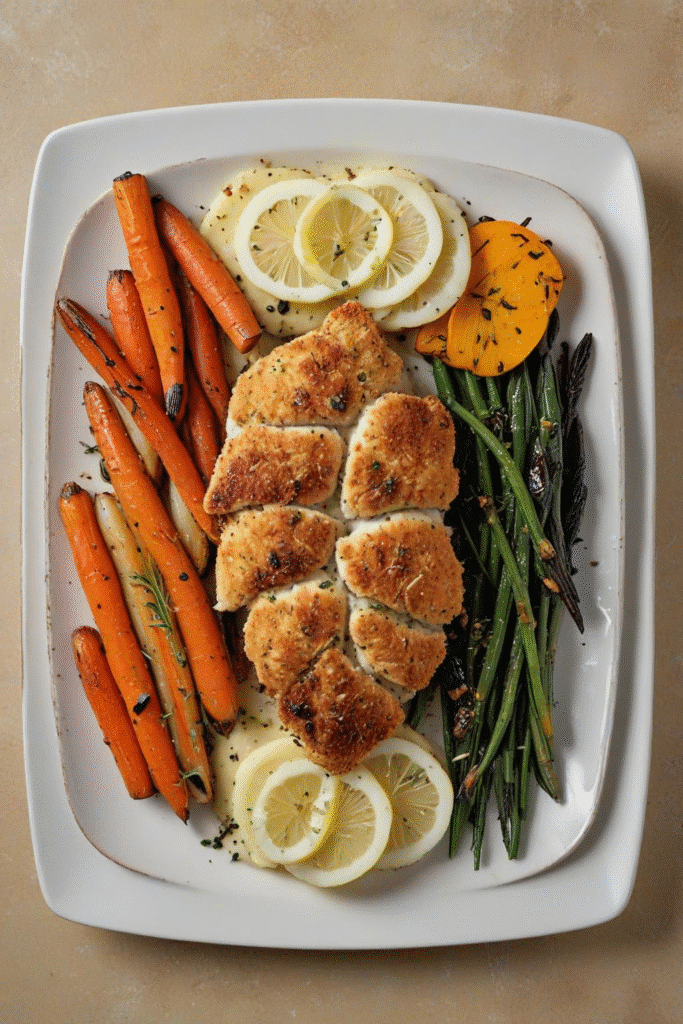
For those who appreciate heat, a Southwestern iteration features the addition of toasted cumin, smoked paprika, and a small amount of finely diced jalapeño to the Parmesan mixture. Serve with avocado crema for a cooling counterpoint that doesn’t sacrifice sophistication.
Perhaps my personal favorite adaptation involves infusing dried porcini mushroom powder into the breadcrumb mixture. The powder, created by simply grinding dried porcini in a spice grinder, introduces profound earthy complexity that transforms the dish entirely while maintaining its fundamental identity. Paired with a mushroom-Marsala sauce, it becomes something transcendent—comfort food elevated to fine dining.
Those monitoring carbohydrate intake might consider a keto-friendly adaptation, replacing breadcrumbs with a mixture of almond flour and crushed pork rinds. While texturally different from the original, this variation develops remarkable crispness while adding nutty depth to the flavor profile.
7. Make-Ahead and Storage Considerations
The demands of modern life often necessitate preparation strategies that professional kitchens have utilized for decades. Parmesan crusted chicken can be breaded up to eight hours in advance, stored uncovered on a wire rack in the refrigerator. This not only saves time during dinner preparation but actually improves texture, as the coating dries slightly, resulting in superior crispness when cooked.
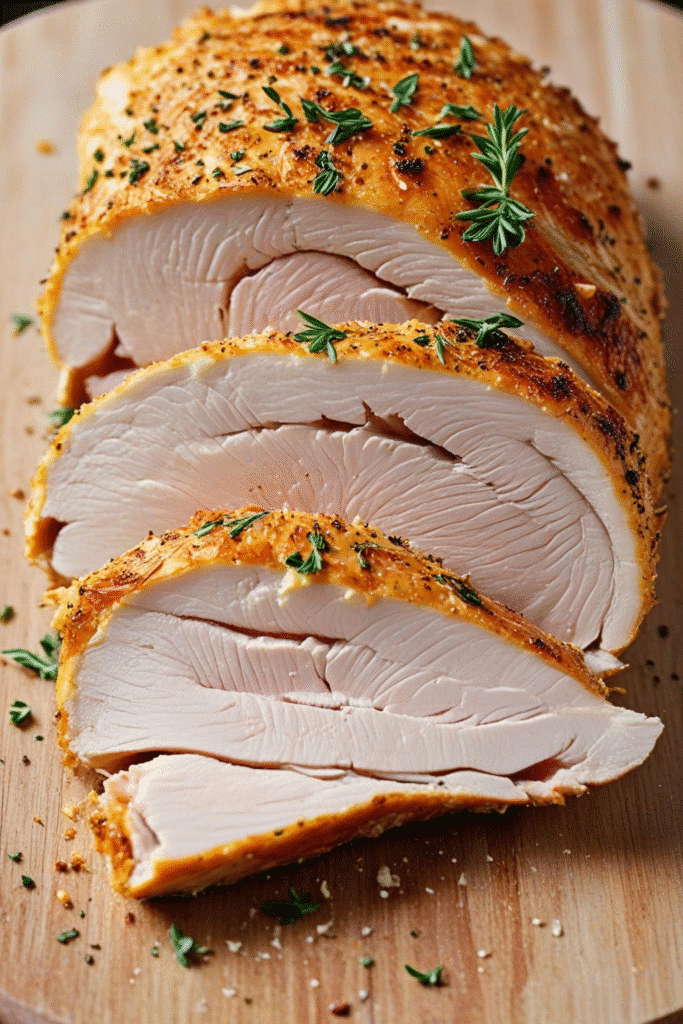
Freezing is possible but requires technique to preserve quality. Freeze breaded chicken pieces on a parchment-lined sheet until solid, then transfer to airtight containers with parchment between layers. Cook directly from frozen, adding approximately 50% more cooking time and finishing in a 350°F oven to ensure complete cooking without burning the exterior.
Leftover cooked chicken—should you be so fortunate to have any—maintains remarkable quality when reheated properly. Avoid the microwave, which creates a steam environment that destroys the crust. Instead, reheat in a 325°F oven on a wire rack until warmed through, about 10-12 minutes. The lower temperature prevents further browning while gently warming the interior.
Conclusion
Parmesan crusted chicken represents that perfect intersection of accessibility and sophistication that defines truly great cooking. Its genius lies not in complexity but in understanding how humble ingredients—chicken, cheese, breadcrumbs—transform through proper technique into something far greater than their individual parts.
The dish showcases a fundamental culinary principle: restraint often yields the most profound results. By focusing on impeccable ingredients, proper temperature management, and attentive execution, even an apparently simple preparation can reach extraordinary heights. Perfect Parmesan crusted chicken isnt about flashy presentation or exotic components—it’s about respecting the process and understanding the science behind it.
Whether serving it for a weeknight family dinner or an elegant dinner party, this dish carries a certain culinary gravitas while remaining approachable and deeply satisfying. Master the techniques outlined here, and you’ll possess not just a recipe but a foundation of cooking principles applicable across countless dishes. That, ultimately, is the mark of truly valuable culinary knowledge.
Frequently Asked Question?
How do I prevent the breading from falling off during cooking?
The key lies in proper preparation: ensure the chicken is thoroughly patted dry before beginning the breading process, press the coating firmly onto the meat, and allow it to rest for 5-10 minutes before cooking. Most importantly, resist the urge to move the chicken prematurely in the pan—let it develop a solid crust before attempting to flip it.
Can I bake this instead of pan-frying for a healthier version?
Absolutely. While pan-frying develops superior crust texture, baking offers excellent results with less fat. Preheat your oven to 425°F, place breaded chicken on a wire rack set over a baking sheet, spray or drizzle with olive oil, and bake for approximately 22-25 minutes until golden and cooked through. The elevated rack position ensures air circulation for proper crisping.
My Parmesan crust browns too quickly before the chicken is cooked through. What am I doing wrong?
This typically indicates your heat is too high or your chicken pieces are too thick. Maintain medium heat (around 350°F), and ensure chicken is an even ½-inch thickness throughout. If browning occurs too rapidly, lower the heat and finish cooking in a 350°F oven until the internal temperature reaches 165°F.
How can I make this dish gluten-free without sacrificing texture?
Replace all-purpose flour with rice flour and use gluten-free panko breadcrumbs. For optimal results, toast the gluten-free breadcrumbs in a dry skillet before combining with Parmesan—this compensates for their typically lower moisture content and creates superior crispness once cooked.
What’s the best way to reheat leftovers without losing the crispy texture?
Avoid microwaving at all costs, as it creates steam that softens the crust. Instead, reheat in a 325°F oven on a wire rack for 10-12 minutes. This gentle heat warms the chicken without further browning or drying it out, while the rack elevation prevents the bottom from becoming soggy.
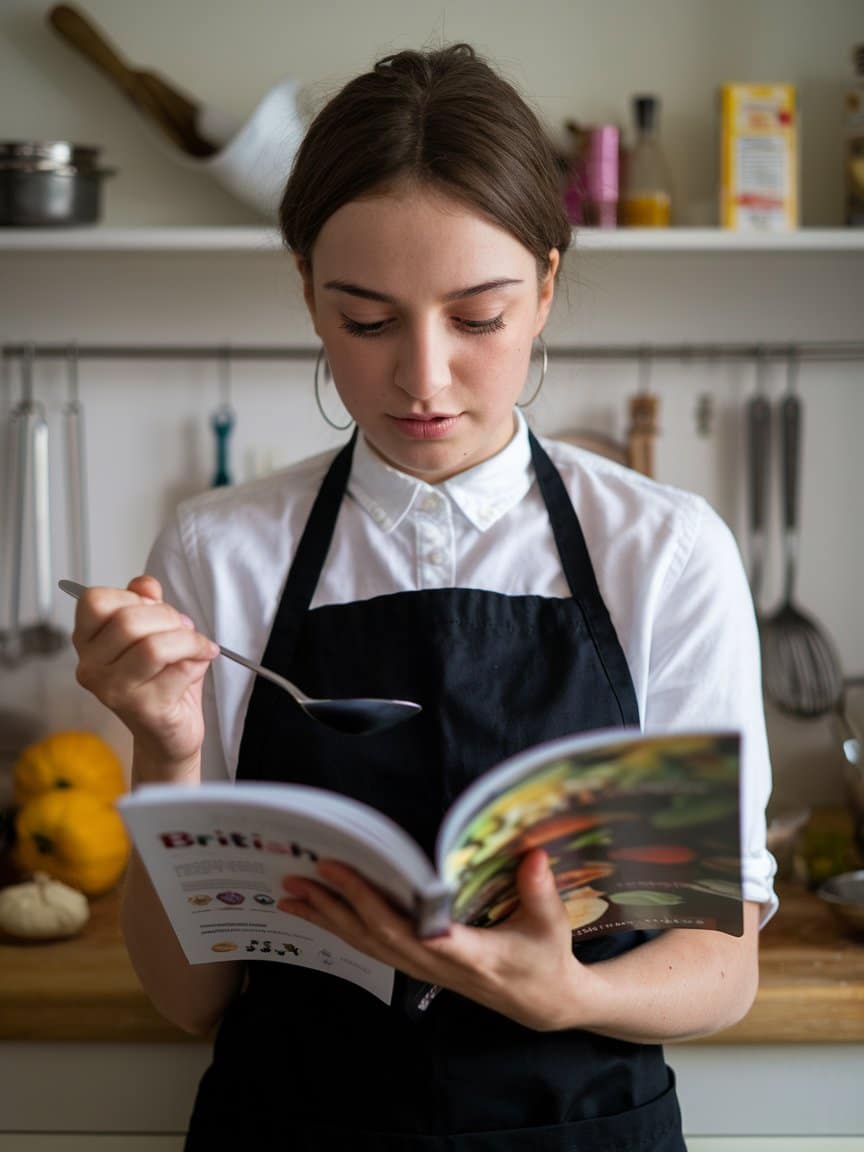
Veronica is a passionate food enthusiast with over three years of experience in exploring and writing about diverse cuisines. Her expertise lies in reviewing restaurants, sharing creative recipes, and discovering the latest food trends. As the voice behind FoodieRecap.com, Anju brings fresh perspectives and culinary insights to her audience.
